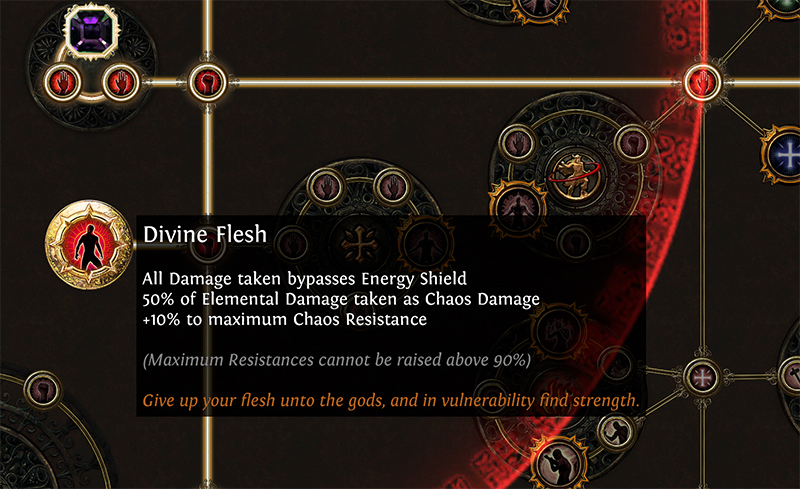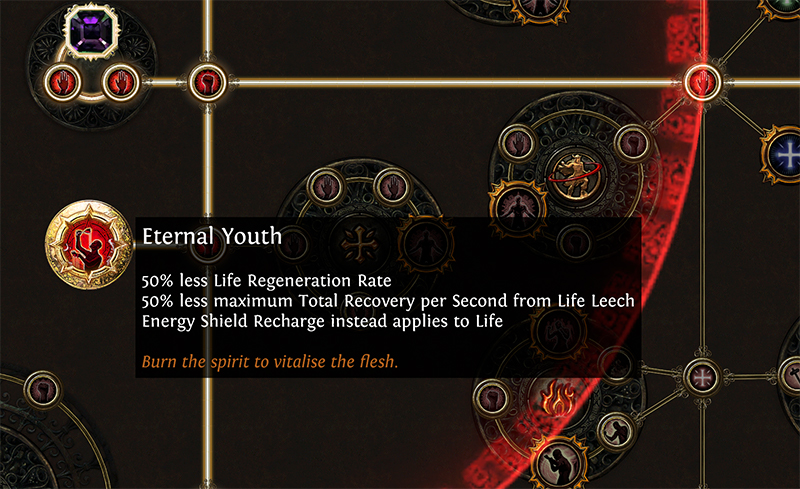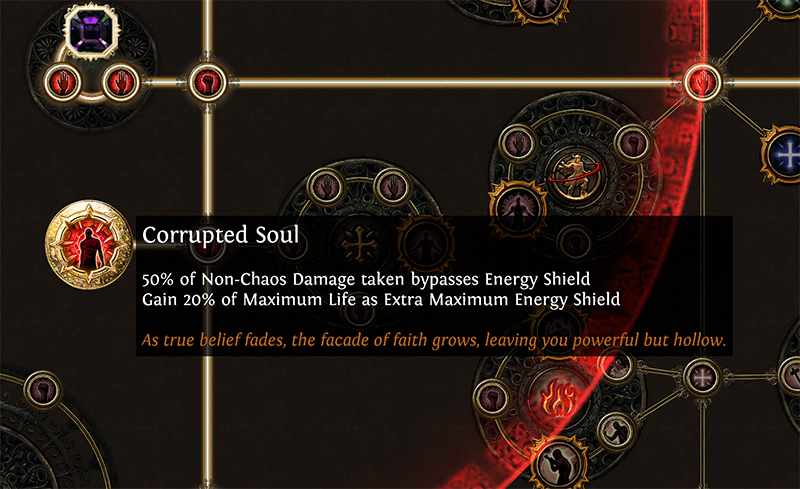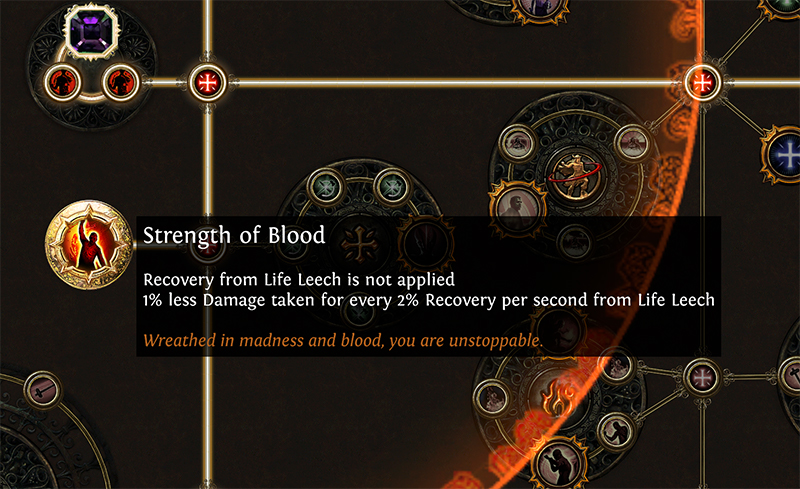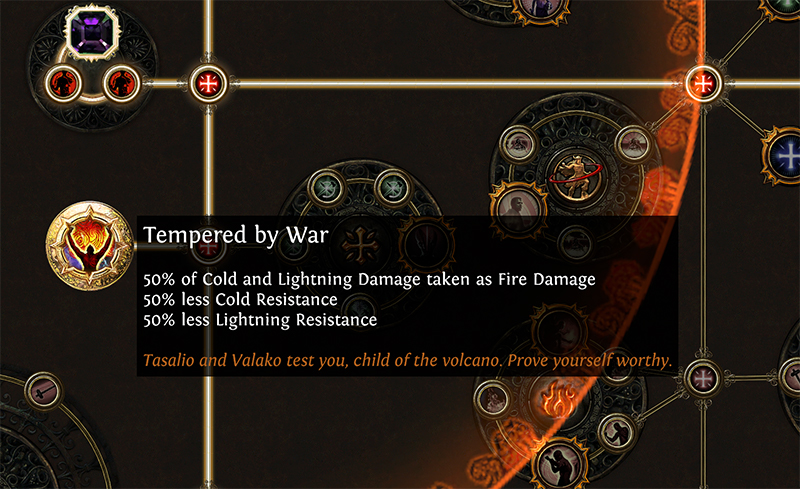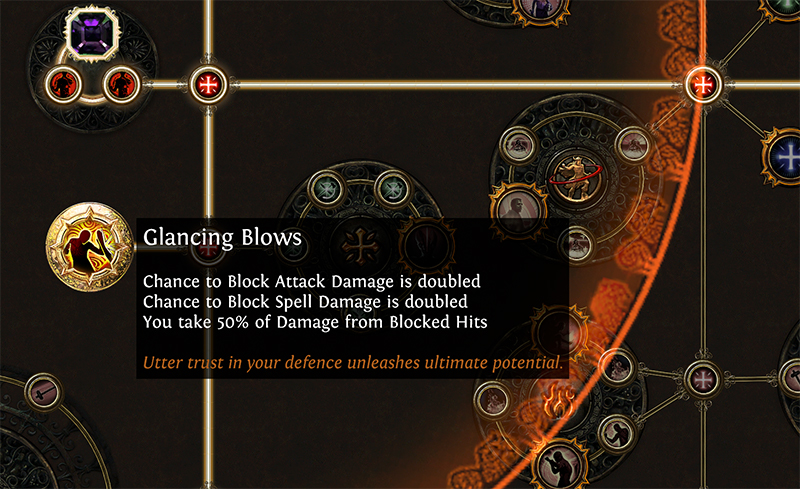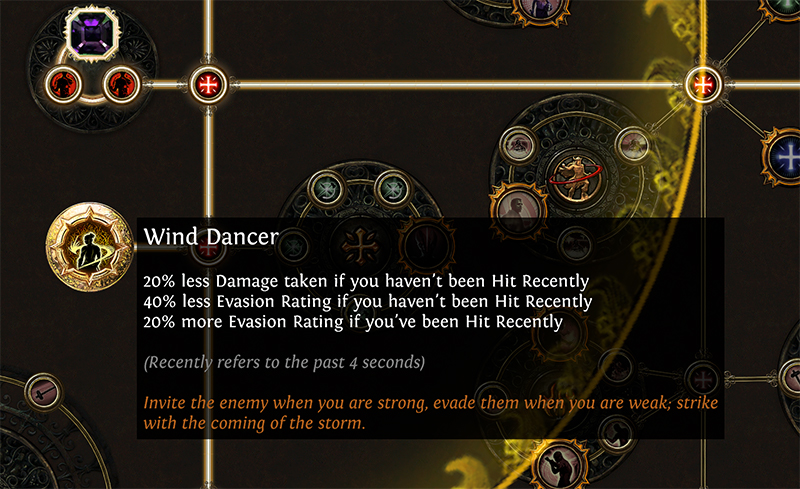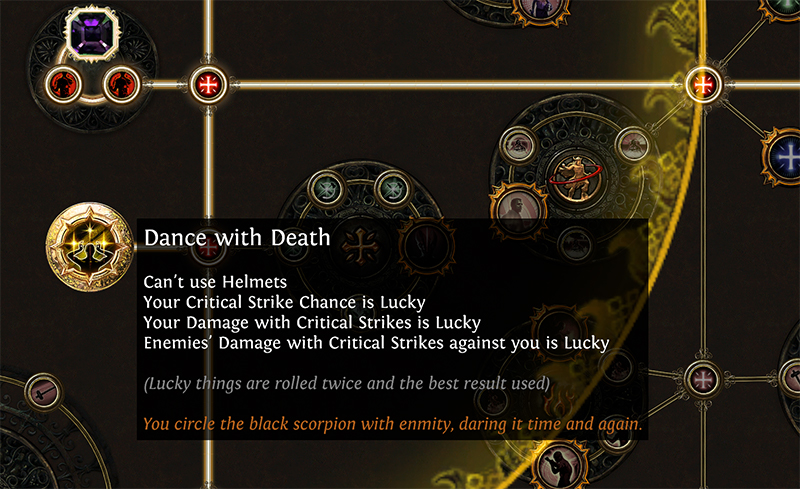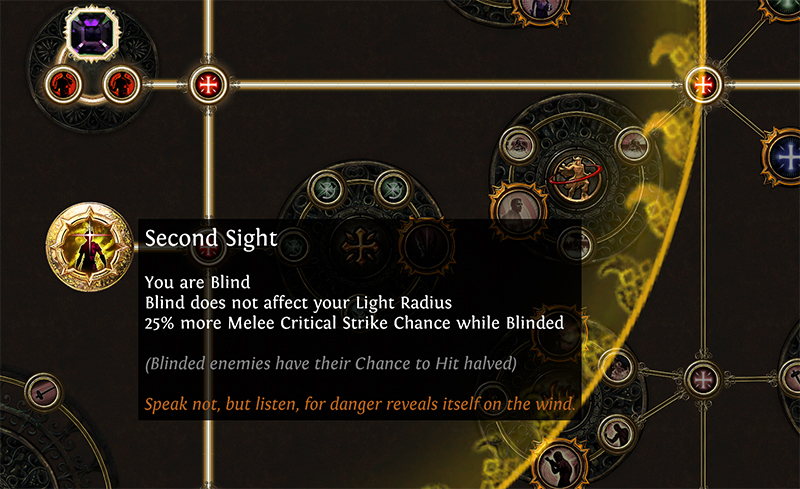
Today we're sharing the final portion of Hrishi's breakdown on designing the new Legion Jewels. If you missed Part One and Part two you can find them
here and
here.
Templar
The Agnostic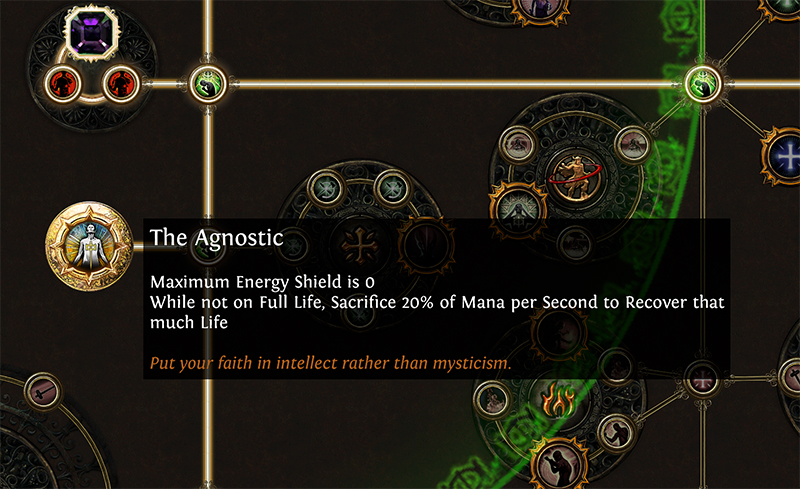
This keystone actually has a longer history than most others, with the idea originating during the development of Delve. The original design for Hale Negator was to have this signature mod on it. However, there were significant problems with it working on an item like that that caused us to shelve it.
When thinking of Templar themed keystones, I remember this mod and how it had been shelved away due to being difficult to do and asked if this was possible. As it turns out, the biggest roadblock back in the day was Energy Shield's interaction with taking damage. If we removed Energy Shield entirely, we could do it, and of course it meant we could be riskier in its balance since scaling both Life and Mana appropriately isn't trivial to do.
The concept is basically trying to promote using your mana to heal you when you take damage. This way you get to fully invest in mana recovery and use that to heal your life pool instead.
Inner Conviction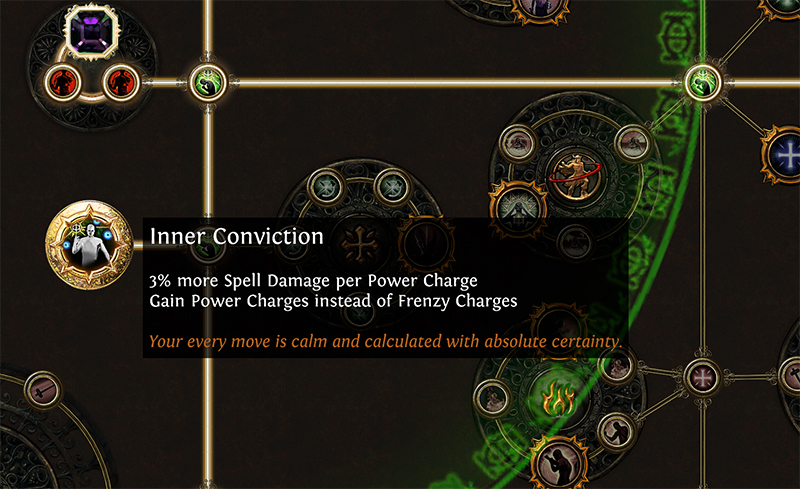
This keystone might be among the oldest ideas in here. This was discussed as a keystone for the actual passive tree a very long time ago, but got shelved due for a number of reasons. When thinking of ideas this old keystone was pitched as one that was quite caster-focused. The downside of losing frenzy charges stings, but the payoff is there if you fully invest into power charges.
Power of Purpose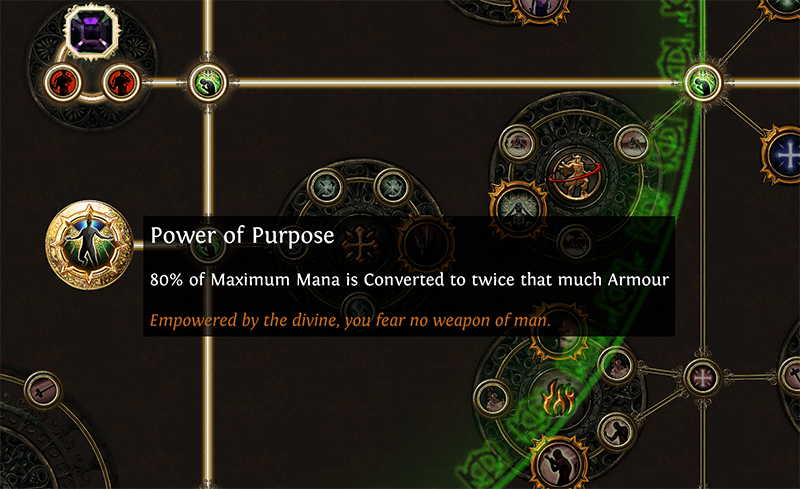
I've always liked the ability for a keystone to convert something into something else entirely different; it's one of the reasons Iron Reflexes is another one of my favourite keystones! This one very much follows that same concept, with some slight modifications to handle mana's unique situation here.
Of course it's harder to stack mana than it is to stack armour, so I had wanted the ratio to be better than 1:1. Also I didn't want you to lose mana entirely, because then you're forced into using Blood Magic, which certainly violates what I wanted keystones to do. As it turns out, we could simply have a very large percentage of mana convert into armour. You'll just have to deal with having a highly diminished mana pool.
Eternal Empire
Supreme Decadence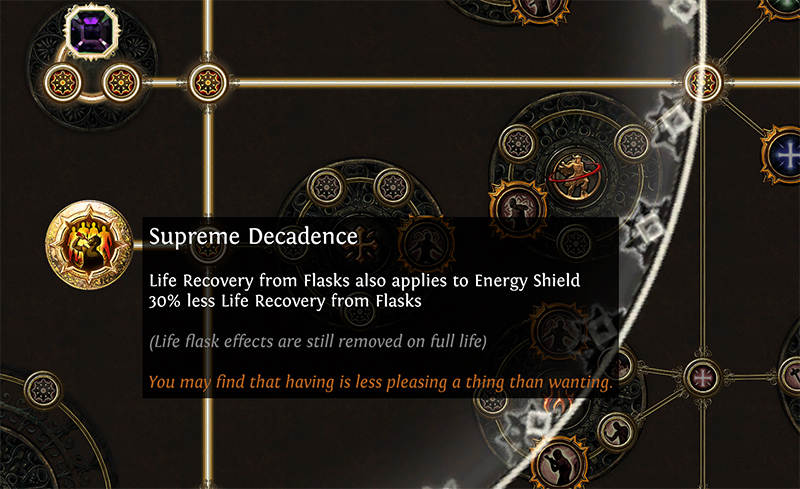
This keystone probably had the longest development cycle of this entire list. It started out doing something entirely different, with the only similar thing being that it dealt with Flasks.
50% less Flask EffectFlasks also affect nearby AlliesThis seemed relatively fun and straightforward at the time, but there were so many problems that came up from this. Not only was it going to be exceptionally hard for players to understand what effects were meant to transfer over to allies, there was the possibility of griefing and killing allies through the use of this keystone and certain unique flasks.
So, we needed to re-think this. We couldn't go ahead with this considering all the problems it had. So we had a few brainstorming sessions and came up with an alternative that sounded quite cool on paper. But we had no way of knowing if it would be fun or not, so we decided to implement it and give it a try. It read as follows.
200% increased Non-Unique Flask DurationEnd all other Flask Effects when you use a FlaskThe idea behind this was to allow you to have incredibly long utility flasks at the cost of having too many flasks up at once. It seemed fine in theory, but in practice it had some horribly broken side-effects. For one, Soulthirst builds got super-charged with so much Flask Duration. Also, you were able to remove negative effects certain unique flasks placed on you as well. But the biggest problem of all was that it didn't really seem very fun to use. So we had to go back to the drawing board.
I tried to come up with a keystone that had the downside of removing Flask charges from kills for a fair amount of time. But the underlying problem was always that the Pathfinder ascendancy already did everything I wanted to do and more, without having that downside in the first place.
Finally, when brainstorming further ideas with flasks, someone mentioned that we had a "keystone" effect already made. This was around the time we had been reworking the Sorrow of the Divine flask, and realised that the new mod we had added was basically circumventing the rules of the game and would have worked quite well as a keystone. We had already tried it out on the unique itself and found that it opened up a cool way to play, so all we did was simply port this over to the keystone and gave it a downside, so that the Sorrow of the Divine was a stronger version of the effect.
Supreme Grandstanding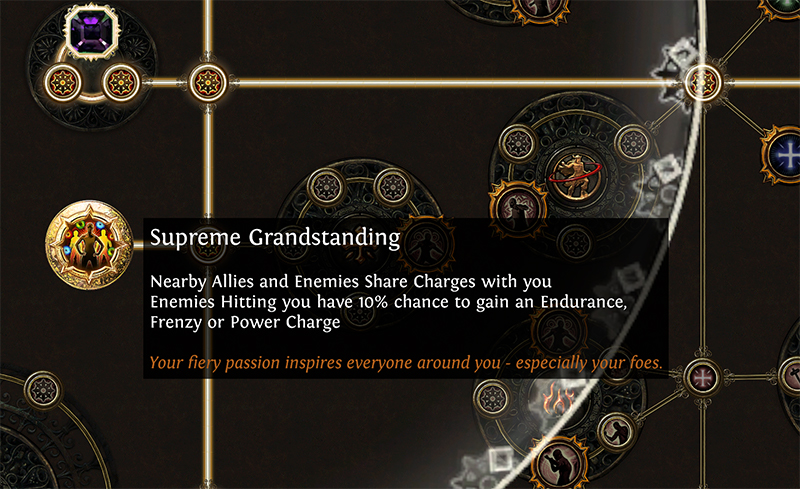
This was one of the first keystones we had designed and came from the corrupted keystone document. As you can probably guess, this was the proposed design for Vaal Conduit. This was one of my favourite "fun" keystones from the original set and thought it worked well here. This is certainly not a pure-power one, but of course it has some easy charge generation attached to it. I really liked the downside as well, as it works both as a downside and an upside in letting you generate charges!
Supreme Ego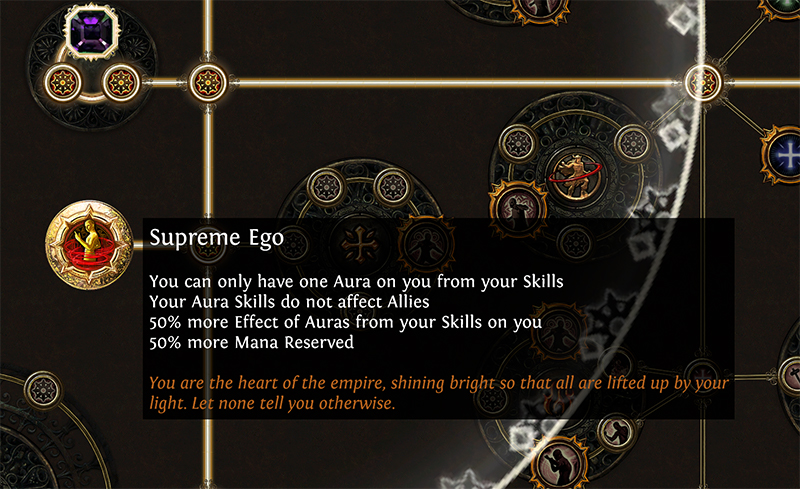
We've wanted to do a "selfishness" effect related to auras for a very long time. When realising we were making some Eternal Empire keystones, this seemed like a perfect for it. It is incredibly common to have people run multiple reservation effects today, but I wanted to make a keystone that was meant for people who wanted to run one super-charged aura.
The only problem was that this needed to somehow prevent running Heralds and other reservation effects, because if it didn't do that, it wasn't exactly creating new behaviour at all. People already usually only run one aura and one herald, and limiting to a single aura doesn't accomplish anything in this case. Eventually, we settled on an easy downside of increasing the reservation costs of everything fairly significantly such that you'll need some heavy investment to run more than a single aura!
Notables, Small and Attributes
Well, so far we had spent a lot of effort in fleshing out the keystones and figuring out what they were going to be for each legion, but at the end of the day, keystones cannot be extremely widely used due to the natural costs associated with them. They are going to enable fun and interesting new builds, sure, but what if you want to make use of the jewel in some existing build? This is, of course, where the rest of the tree comes in.
Essentially, we needed to figure out how each of the five legions were going to modify notables, small nodes and attribute nodes. Ideally, each and every one was going to be wildly different. In practice, there are only so many ways to modify passive skills on the tree, but we were determined to figure out how to make the jewels feel very different to each other.
To this end, we had a meeting and basically used a whiteboard to draw a massive table, under which we listed every way a passive skill could potentially be modified. Some of these were "Adding a random new stat", "Replace passive skill with new random passive skill", "Create randomised passive skill with list of stats", "Blank passive skill" and so on. From this massive list, it was simply a matter of figuring out which modification made the most sense for each legion. In general, we tried to preserve the flavour of each legion as best we could.
VaalThis was the easiest and the first one to get done. Of course, seeing as the entire concept started with what this legion could do the tree, it's no surprise that we immediately knew what this legion's jewel was going to do. Heavy randomisation was the name of the game here, every attribute and small node were going to be replaced with entirely random nodes. Every notable was going to be replaced with a preset list of "vaal notables". But most importantly, this legion is the only one where the values on all these passives are also random! We tried to keep as close to the feeling of corruption as we could.
Karui and MarakethOne of the issues we thought we'd face after developing the Vaal Jewel was that we felt it was incredibly hard to determine whether the jewel was good for you or not, since it removed so many stats and added so many more! For this reason, we felt it was important to have a few of the legion jewels be more obvious, so to speak.
We picked the Karui and Maraketh ones to be the legion jewels that never took anything away from you, only added stats onto existing passive skills. From the existing flavour, we determined that we could easily get away with STR-themed bonuses with the Karui, alongside DEX-themed bonuses with the Maraketh. Of course, the stats they add onto the notables are a lot more exotic, with some incredibly special ones thrown in there, especially for the Maraketh.
While it is a bit unfortunate we couldn't make one with INT-themed bonuses, it's not the end of the world. We felt there was no need to restrict ourselves that way and to be okay with an incomplete cycle, so that we could make the remaining legion jewels feel a lot more different.
Eternal EmpireIf the Karui and Maraketh jewels were only going to add stats onto your existing tree, it made sense to have one that kind of did the opposite and removed stats from your tree. Of course, if that was all it did, nobody would use it. So we came up with a plan to make some super-charged notables to go alongside the cost of losing all your small and attribute passives.
While we were unsure about this at the start, once we developed it further we felt it was really simple to tell if you wanted to use this or not, since all you had to do was mouseover your new notables and see if you liked the new big numbers there. Of course, the cost of losing your minor passives is fairly harsh, but it's hopefully overcome by a good jewel with new super-charged notables that apply to your build!
TemplarWhile thinking of what to do with the Templar, somebody had the idea of creating a new pseudo-attribute known as "Devotion". The idea of stacking your Devotion in order to gain power felt like a very strong thematic connection to the Templar legion. After which, it was simply a matter of figuring out how to make this jewel feel different.
We've always felt Watcher's Eye was a fairly successful unique in how it's essentially a large number of unique items in one. So in order to make this jewel feel different, we thought we could place more of an emphasis on the jewel itself, and make a bunch of stats that cared about how much devotion you had. This jewel would randomly have two of these stats, so in order to maximise your character, you'd need one with the right stats as well as the correct seed (which could be acquired through divines, of course!).
Something was still missing though. While it was cool to see your attribute passives get converted into "devotion", the rest of the actual interaction with the tree seemed to be lacking something. In order to give it something else special, we created a set of templar notables that have a chance of replacing existing notables in the tree. What's special about them is that they specifically turn on only after you acquire a certain amount of devotion, which, once again, seemed very thematically strong!
Closing Thoughts
Many years ago when I inadvertently caused the creation of the Mind Over Matter keystone, I was incredibly happy that my design affected the game in such a fundamental way, and since then, I've always wanted to make more keystones. I never thought in my wildest dreams there would be a point where I'd get to make so many all at once. I really hope this set of keystones opens up some new possibilities and creates diversity in builds. I also really hope this set of jewels really manage to open up the passive tree in new and interesting ways for people to experiment. But more than anything else, I really hope you have as much fun playing with them and figuring out how best to use them as I had developing them.


